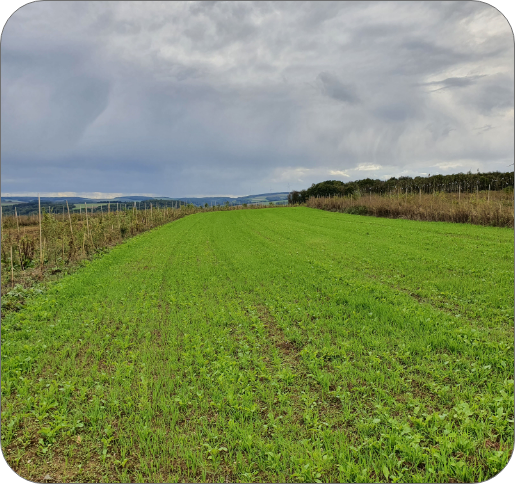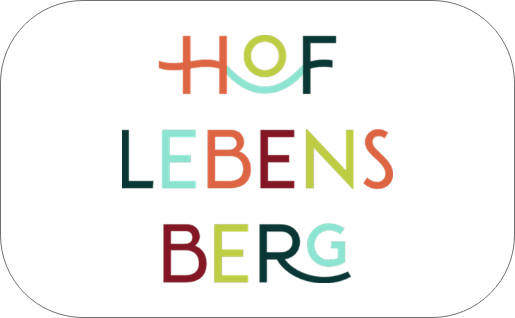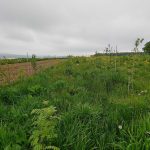
Contact person:
Mr. and Mrs. Paul and Janine Raabe
researcher agroforestry at Inargo

Living Lab 5: Germany
Managed by: Hof Lebensberg Farm
General information
The German living lab, Hof Lebensberg, is located near Obermoschel in the federal state of Rehinland-Pfalz. It is located in the hilly mountainous region of the Northern Palatinate Mountains. The area is characterized by sandstone and topography of volcanic origin from the Donnersberg volcanic mountain nearby.
The motivation of the farmers is to create a resilient, diverse functioning ecosystem through syntropic regenerative agriculture. The active area of farming is approximately 28 ha and has two plots of agroforestry systems (plot_A and plot_B), three greenhouses, a vegetable garden and a Rye growing area where a mobile chicken coop is placed. The farmers plan to expand their activities by growing pumpkins and rearing cattle.
The soil had lost its fertility due to erosion and years of monocropping. Therefore, the farmers have adopted soil regeneration through green manure (clover and others), terra preta.
It also explains the high density of trees planted in each row. Especially the fast-growing trees are planted to grow as much biomass as possible for the system. Once the tree size is big enough to affect the growth of the main tree species sensibly, the farmer says they will be cut, chipped and added to the soil.
General farming approach
Regenerative agroforestry system; bio-intensive vegetable production; plow less farming
Objectives
The farmers operate a delivery service of community-supported agriculture (CSA) boxes. CSA boxes contain vegetables, fruit, eggs, bread, cheese, milk, meat, and many other regional products.
Challenges
- Labor and regenerating soil fertility
Research goals
The lab aims to estimate the costs and benefits involved in developing a sustainable and fertile agroforestry system, which, we expect, may become in the medium- to long-term into a very productive agro-ecosystem that minimizes inputs thanks to the achievement of synergies between human management and nature´s cycles.
The farmers hope to develop a system that serves as a model for others to develop their farms, hence increasing local and regional capacities to supply internal demands and provide opportunities for decent jobs while contributing to regional and national climate change adaptation and global climate change mitigation.
Design of the agroforestry system
This system is divided into two parts, a 7.53ha nut based alley cropping system and a 10ha fruit based alley cropping system. Within the cultivated rows a wide variety of vegetables and grains as well as potatoes are grown with further diversification of crops planned. A mobile chicken coup has also been integrated into the system with further farm animal synergies planned.
Monitoring
Biodiversity and tree height monitoring through a Citizen Science project is being carried out since May 2023 with the collaboration of the Agroforest Monitoring project

Germany, the farm has two key plots that we have named Agroforestry_plot_A and Agroforestry_Plot_B

7.53 ha (Plot A-nut system) and 10 ha (Plot B-fruit system)

Silvoarable, Silvopoultry, and Silvopastoral (planned)

Mixed system

Plot A planted in the winter of 2020/2021 and Plot B planted in the winter of 2022

Inter-row/In-row distance (for Plot A): ~15 m between two rows of woody elements; ~3 m between two main trees in a row of woody elements, between the main trees transient fast-growing tree species, and the understory of shrubs and flowering strips are planted in a woody strip.

Width of Woody Strips: Variable width woody strips have been implemented to experiment with the outcomes resulting from differentially structured wooded areas. The majority of the system utilizes a 5m width woody strip.

Plot A: planted 30,000 trees and shrubs, of which 674 are main trees, and the rest are trees grown for fast biomass accumulation and slash-and-mulch, and understorey shrubs.
Plot B: 60,000 trees & shrubs

Wheat, einkorn wheat, rye, vegetables, potatoes, pumpkins

Livestock: Chicken and some turkeys; Cattle (planned)









